From Poe to Poppy Z. Brite: The Undeniable Link Between Gothic Literature and Goth Culture
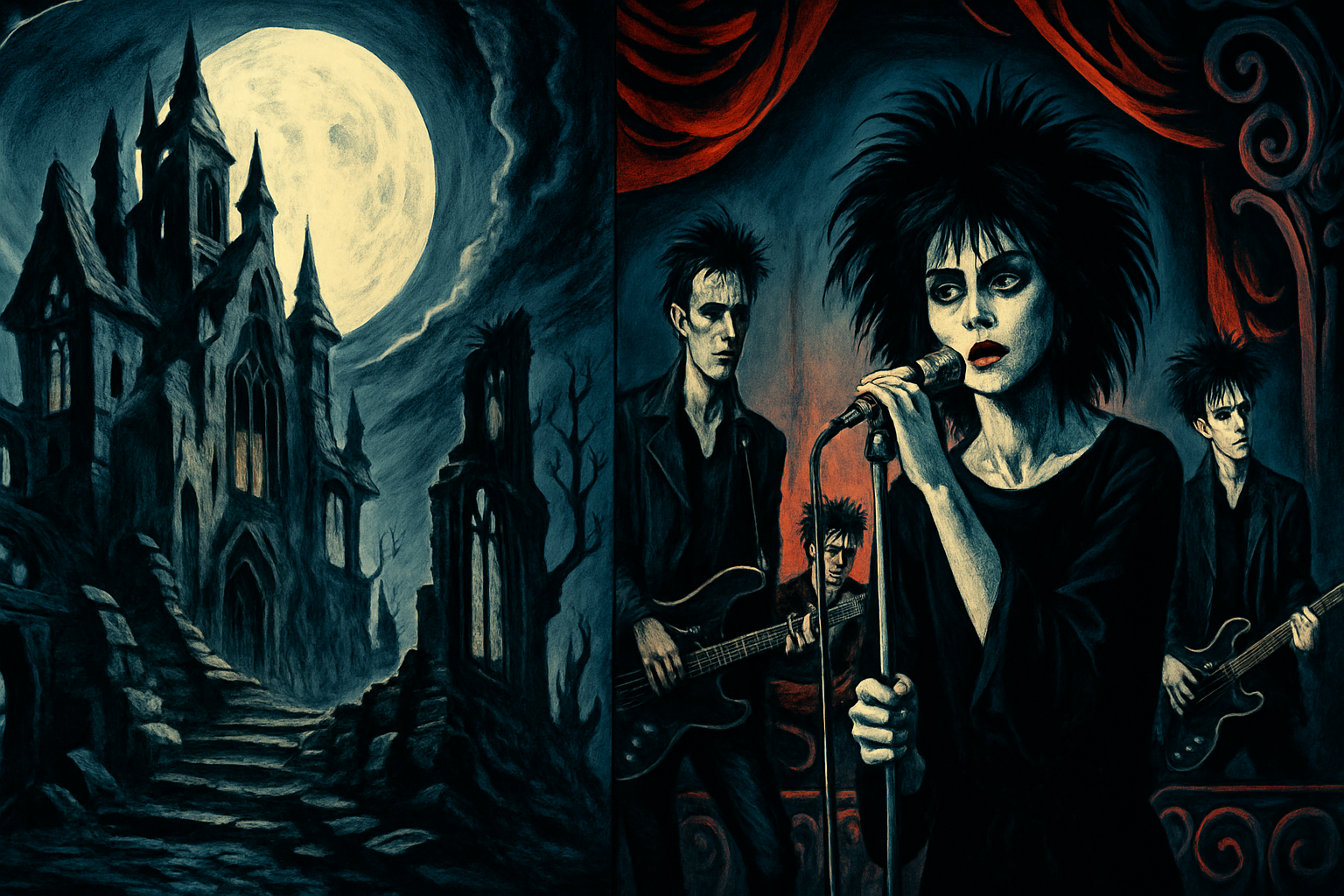
The DNA of the Goth subculture is written in the pages of classic gothic fiction, a literary tradition stretching from 18th-century castles to modern chronicles of the undead.
To truly understand the Goth subculture—its fashion, its music, its philosophy—one must look beyond the black velvet and pale makeup and turn to the bookshelf. The soul of Goth is not found in a particular sound but in a literary tradition that predates the subculture by two centuries. The brooding, alienated anti-heroes of Romantic poetry and the first gothic novel are the direct ancestors of the atmospheric soundscapes and introspective lyrics of post-punk music. The subculture is not merely influenced by gothic fiction; it is a living, breathing continuation of its most enduring themes.
This exploration will trace that unbroken creative lineage, from the haunted castles of the 18th century to the psychological torment of Edgar Allan Poe. We will see how post-punk bands translated these foundational texts into sound and how modern authors, writing from within the subculture itself, have brought the tradition full circle. This is the story of how a literary genre gave birth to a cultural movement.
The Birth of Darkness: Forging the Archetypes of the Gothic Novel
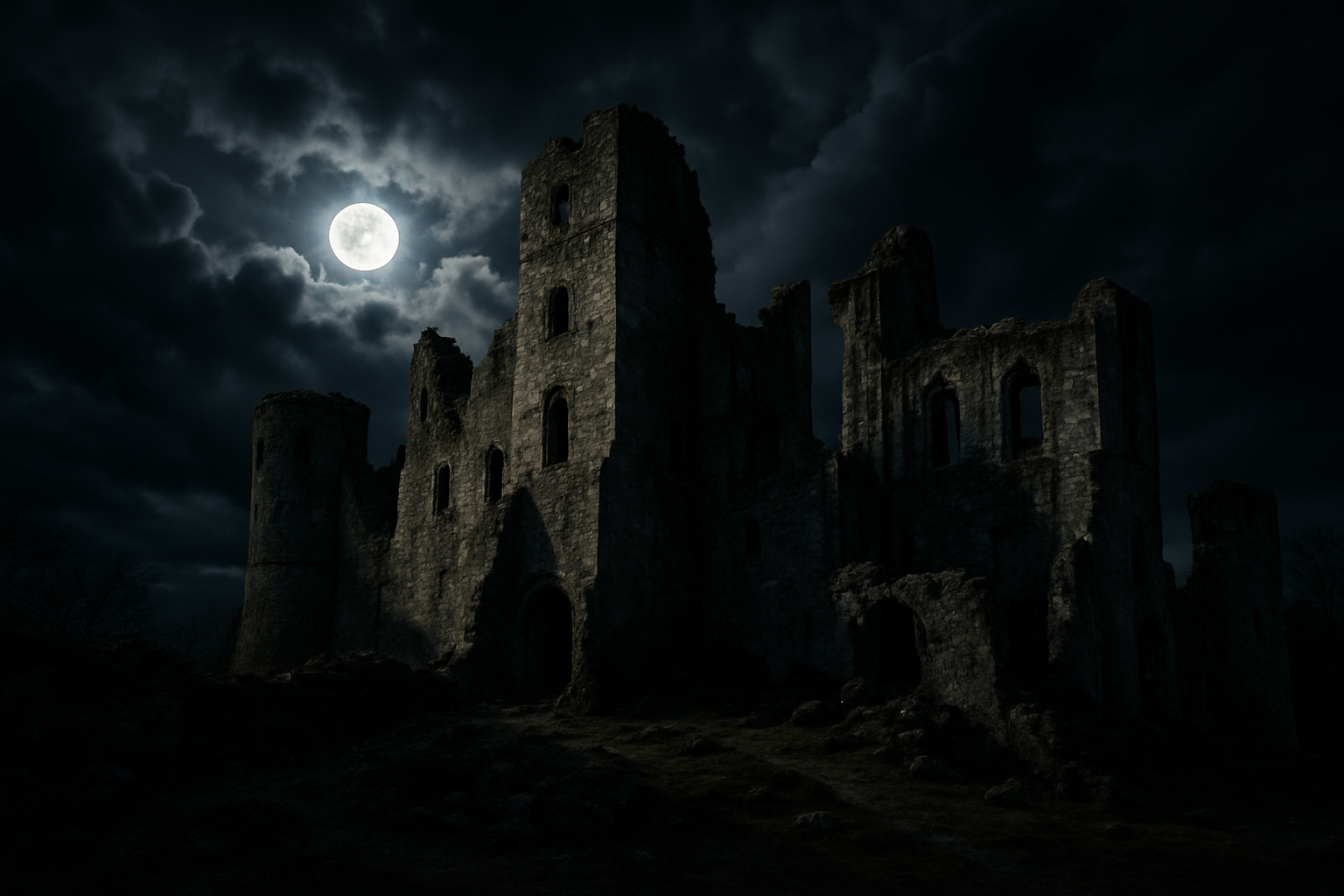
The crumbling castle, a key element of the classic gothic novel, symbolizes the oppressive weight of history and the decay of the old world.
The DNA of Goth aesthetics and narrative was coded in the mid-18th century, when a new literary form emerged that was obsessed with the past, the supernatural, and the sublime terror of the unknown. This was the birth of the gothic novel, a genre that would provide the archetypes and atmosphere for a subculture that would not exist for another 200 years.
Horace Walpole and the Haunted Castle Blueprint
The genre of gothic fiction was established with the publication of Horace Walpole's The Castle of Otranto in 1764. Walpole's novel was a revolutionary blend of medieval romance and modern novelistic techniques, creating a template that would be emulated for centuries. He introduced a set of tropes that are now synonymous with the Gothic: a decaying, labyrinthine castle symbolizing the oppressive weight of history; supernatural events, like a giant helmet falling from the sky; a tyrannical villain in Prince Manfred; and a persecuted heroine, Isabella, fleeing through secret passages.
Most importantly, Walpole established the theme of ancestral sin—the idea that the crimes of the past continue to haunt the present. This concept of being burdened by history, of living within the ruins of a fallen world, became a cornerstone of the Gothic worldview and, later, a central feeling within the Goth subculture.
The Romantic Terror of Shelley, Stoker, and the Byronic Hero
As the genre evolved through the Romantic and Victorian eras, its villains became far more complex and alluring. A key development was the archetype of the Byronic hero, inspired by the poet Lord Byron, who was famously described as "mad, bad and dangerous to know". This moody, rebellious, and intellectually superior outcast became a powerful romantic figure and a direct precursor to the charismatic Goth frontman.
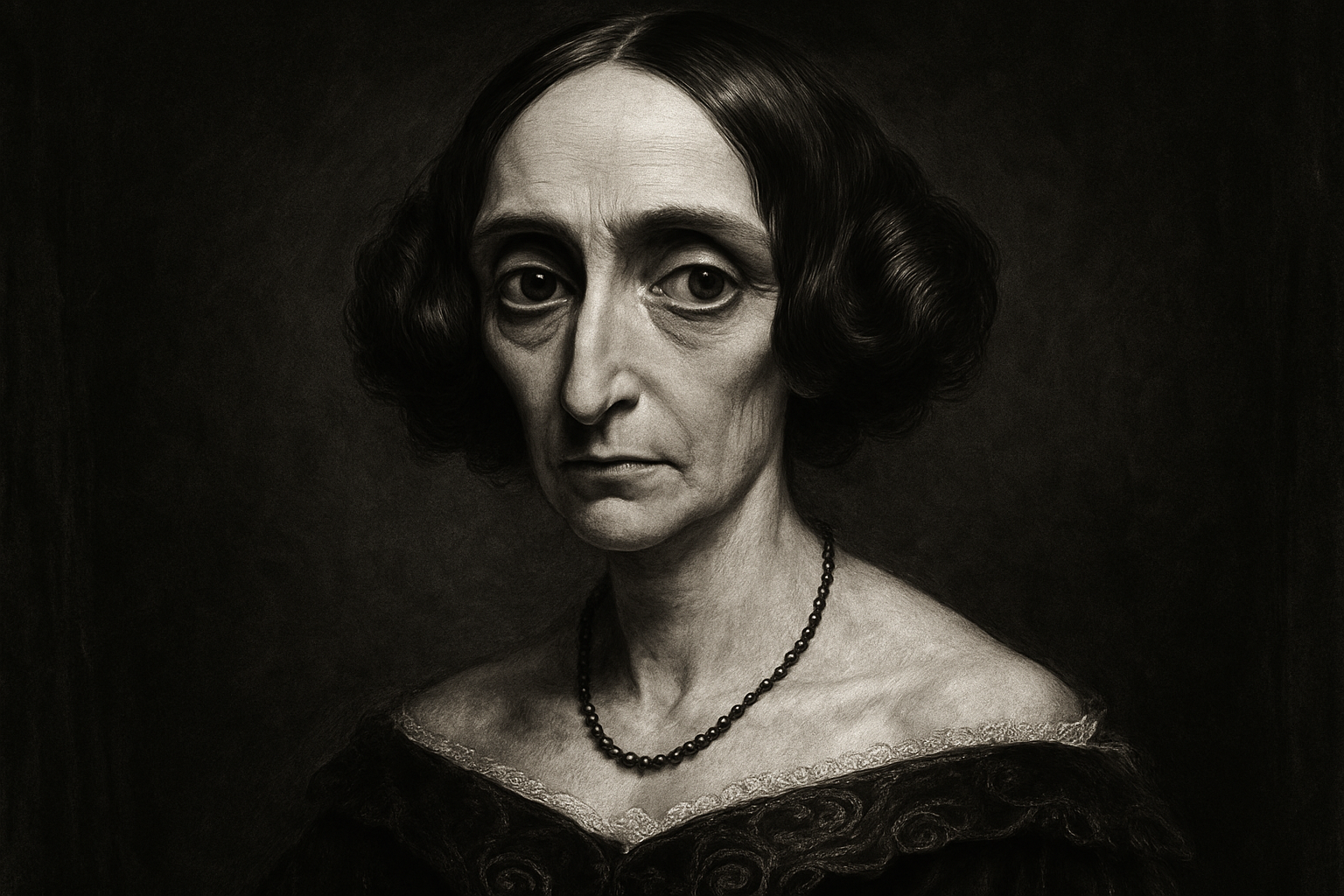
Mary Shelley, whose novel Frankenstein revolutionized gothic fiction by creating a sympathetic monster and exploring themes of scientific hubris.
Mary Shelley’s Frankenstein (1818) marked a profound shift by exploring the dangers of unchecked ambition and scientific hubris. Crucially, her creation is not a simple monster but a tragic, intelligent, and deeply alienated figure who elicits our sympathy. This move away from a one-dimensional villain toward a "sympathetic monster" is perhaps the single most important literary development for the future Goth identity, which has always identified with the misunderstood outsider rather than the conventional hero.
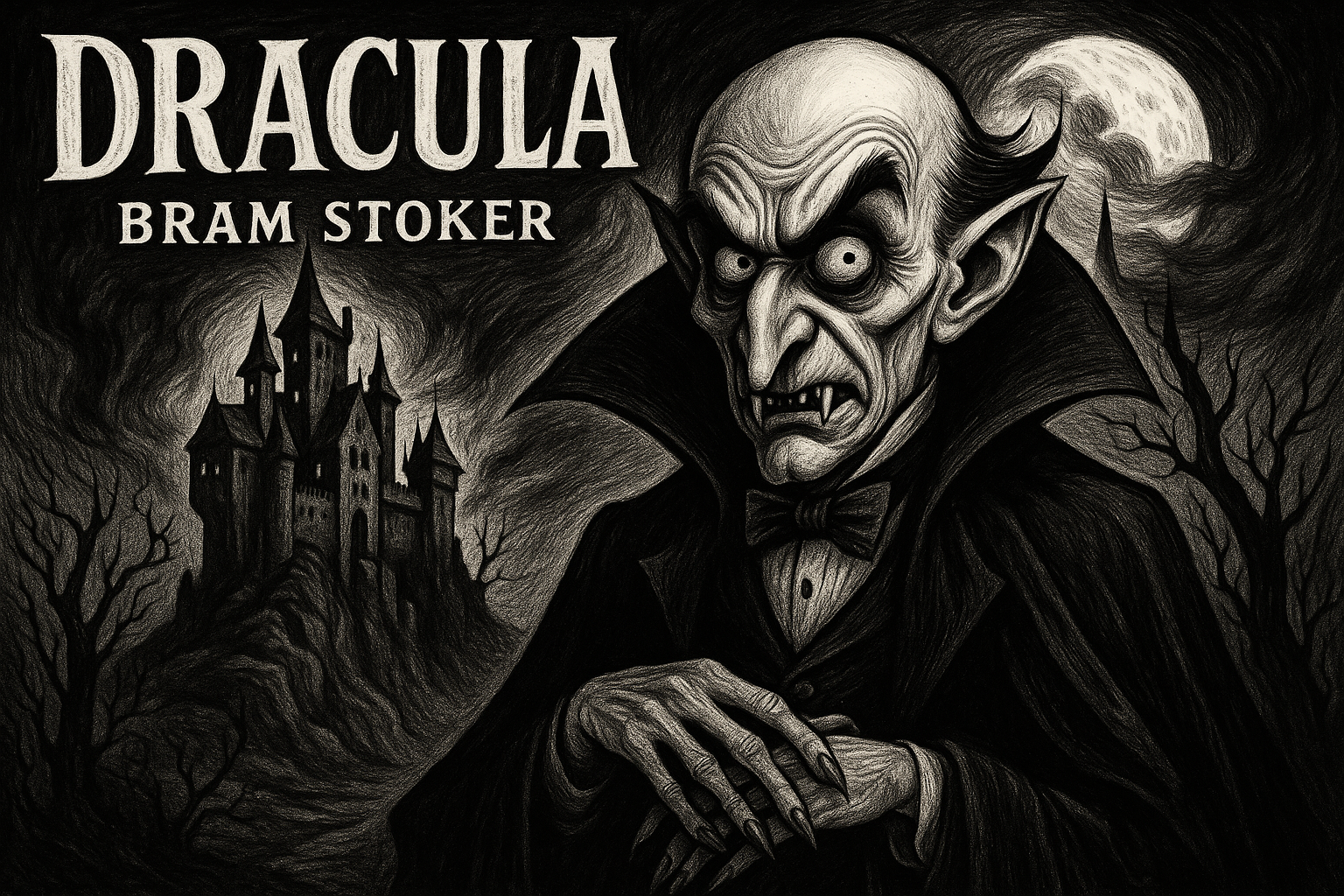
Bram Stoker’s Dracula perfected the image of the aristocratic, seductive predator, creating an icon of gothic horror that continues to influence culture today.
Decades later, Bram Stoker’s Dracula (1897) perfected the image of the aristocratic, seductive, and immortal predator. Stoker’s novel tapped into Victorian anxieties about repressed sexuality, the fear of foreign influence, and the clash between scientific modernity and ancient superstition—themes that the Goth subculture would later reclaim and explore with relish. The evolution from Walpole’s brutish Manfred to Shelley’s tragic Creature and Stoker’s charismatic Count mirrors the subculture’s profound identification with "the other," finding beauty and tragedy where mainstream society sees only horror.
Edgar Allan Poe: Architect of Psychological Gothic Horror

Edgar Allan Poe revolutionized gothic horror by turning inward, exploring the haunted corridors of the human mind rather than the decaying stones of a castle.
While earlier authors built the Gothic house, it was Edgar Allan Poe who furnished its darkest rooms: the chambers of the human mind. Poe is arguably the most essential literary figure for the Goth ethos because he engineered a crucial shift in the genre. He took the horror from external settings and relocated it to the internal landscapes of his characters.
From External Gloom to Internal Torment
In tales like "The Fall of the House of Usher," the decaying mansion is merely a reflection of the decaying psyche of its inhabitants. Poe’s true subjects were madness, obsessive grief, psychological torment, and the fragile boundary between life and death. Through his use of unreliable narrators, particularly in stories like "The Tell-Tale Heart," he forces the reader to experience reality through a fractured, paranoid lens, making the horror deeply personal and inescapable.
This psychological turn provided the very philosophy that animates the Goth subculture. The scene's defining characteristics—a deep-seated introspection, a romantic melancholy, and a fascination with the darker aspects of human emotion—are a direct continuation of Poe's literary project. While Walpole provided the setting and Stoker the icons, Poe provided the mindset. His work established a shared psychological framework that values finding beauty in despair and sublimity in sorrow.
From Page to Stage: How Gothic Fiction Inspired Goth Rock
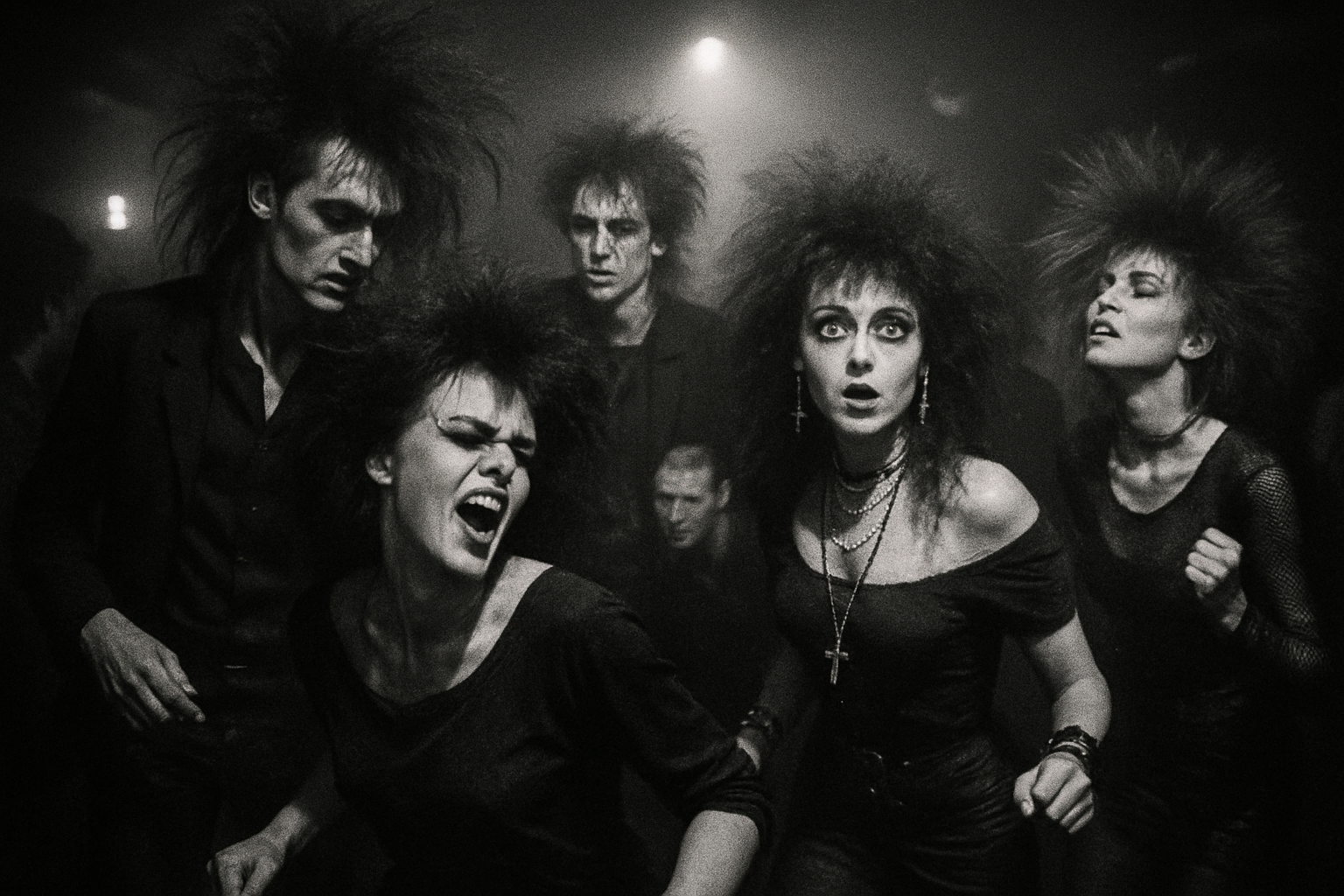
In the post-punk clubs of the late 1970s and early 80s, the themes of classic gothic fiction were reborn in sound, style, and attitude.
The bridge between the dusty pages of the 19th-century gothic novel and the reverberating gloom of a 1980s nightclub was built by the post-punk movement. Emerging from the ashes of punk in the late 1970s, bands began to trade raw aggression for atmospheric, introspective, and experimental sounds. This new musical landscape was the perfect medium to translate the themes of classic gothic fiction into sound and performance.
The Post-Punk Cauldron and Lyrical Echoes
The link between Gothic literature and Goth music was not a passive or atmospheric coincidence; it was a conscious and intellectual act of translation. Many of the scene's pioneering musicians were well-read art students who deliberately embedded literary references and themes into their work. They were not just influenced by these books; they were actively reinterpreting them, using music as a new form of literary criticism.
The Architects of Goth Rock and Their Literary Muses
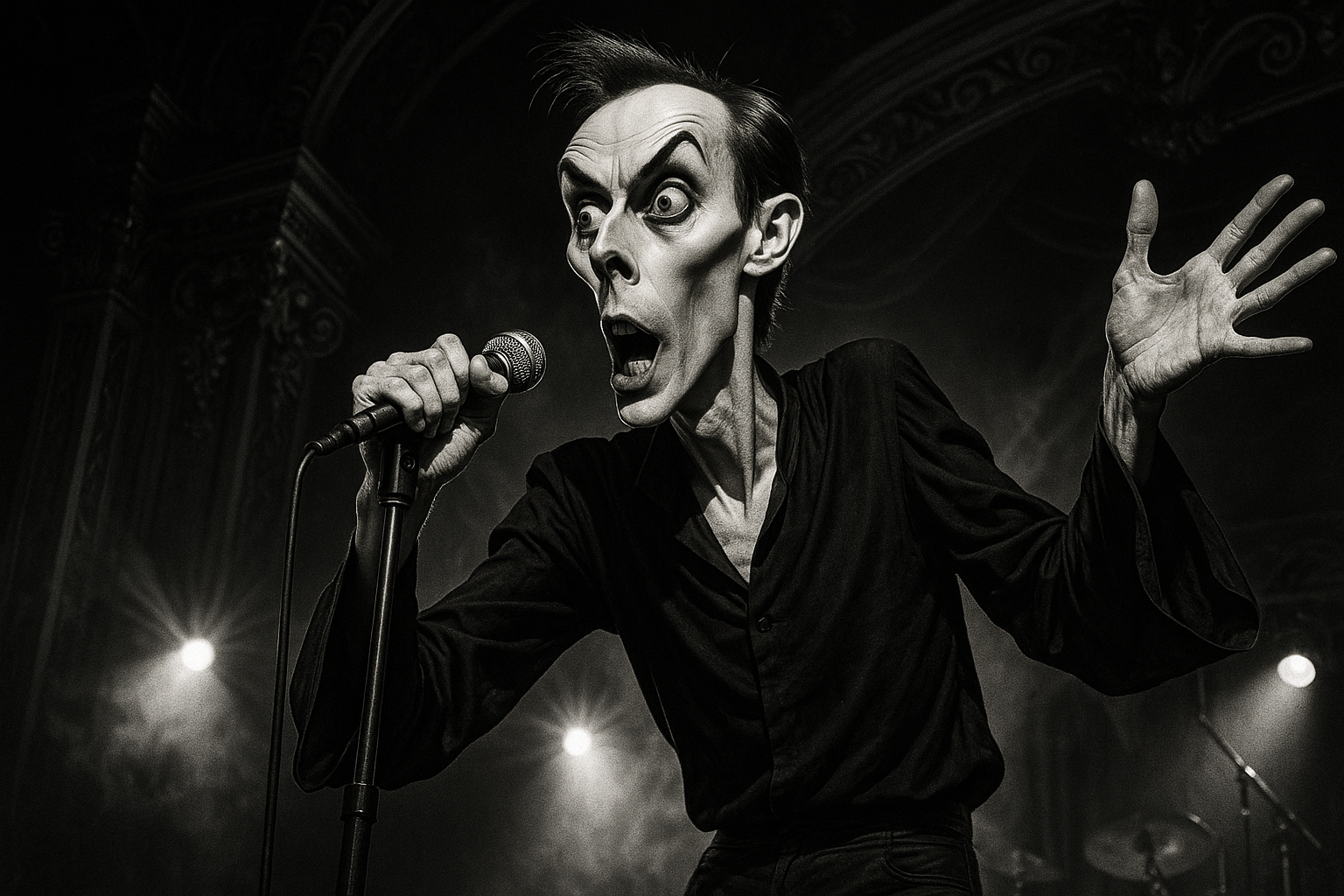
Peter Murphy of Bauhaus on stage in the early 1980s. The band's theatricality and dark sound were directly inspired by classic gothic fiction.
The direct lineage from page to stage is clear when examining the scene's foundational bands. Their work is a testament to the enduring power of the Gothic literary tradition.
- Bauhaus: Their nine-minute epic "Bela Lugosi's Dead" (1979) is widely considered the subculture's founding anthem. More than just a song about the actor famous for playing Dracula, it is a piece of atmospheric theatre that channels the dread and eroticism of Stoker's novel and the stark, shadowy aesthetic of German Expressionist horror films.
- Siouxsie and the Banshees: Fronted by the formidable Siouxsie Sioux, the band explored themes of psychological terror, childhood trauma, and madness, echoing the narrative style of Poe. Songs like "Happy House" use a cheerful veneer to mask a deep sense of unease, a classic Gothic trope of a beautiful facade hiding a corrupt interior.
- The Cure: Frontman Robert Smith has been open about his literary inspirations. The band's early single "Killing an Arab" is a direct musical interpretation of a pivotal scene from Albert Camus' existentialist novel The Stranger. His lyrics are also heavily influenced by the psychological landscapes of Franz Kafka and the melancholic poetry of Edgar Allan Poe and Charles Baudelaire.
- The Sisters of Mercy: Andrew Eldritch's intellectual and often cynical lyrics are steeped in literary modernism. The song "Floorshow" directly quotes and recontextualizes lines from T.S. Eliot's seminal poem "The Waste Land," demonstrating the highly literate and intertextual nature of the Goth rock canon.
The Modern Gothic Renaissance and Its American Roots
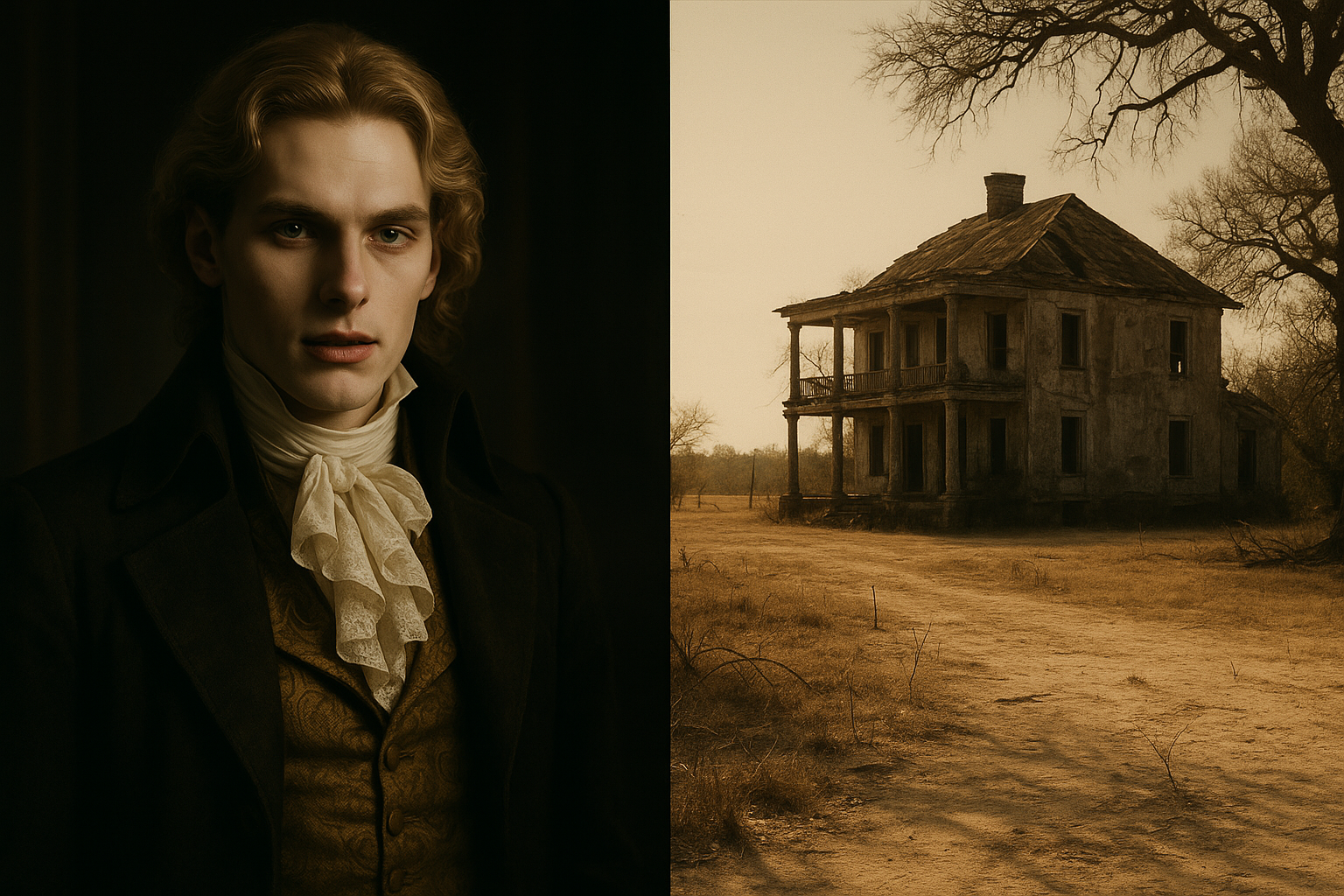
American authors like Anne Rice and the tradition of southern gothic fiction breathed new life into the genre, providing powerful new archetypes for the Goth subculture.
As Goth rock was solidifying in the UK, American authors were breathing new life into gothic fiction, creating new archetypes and aesthetics that would be eagerly embraced by the burgeoning subculture.
Anne Rice and the Reimagining of the Vampire
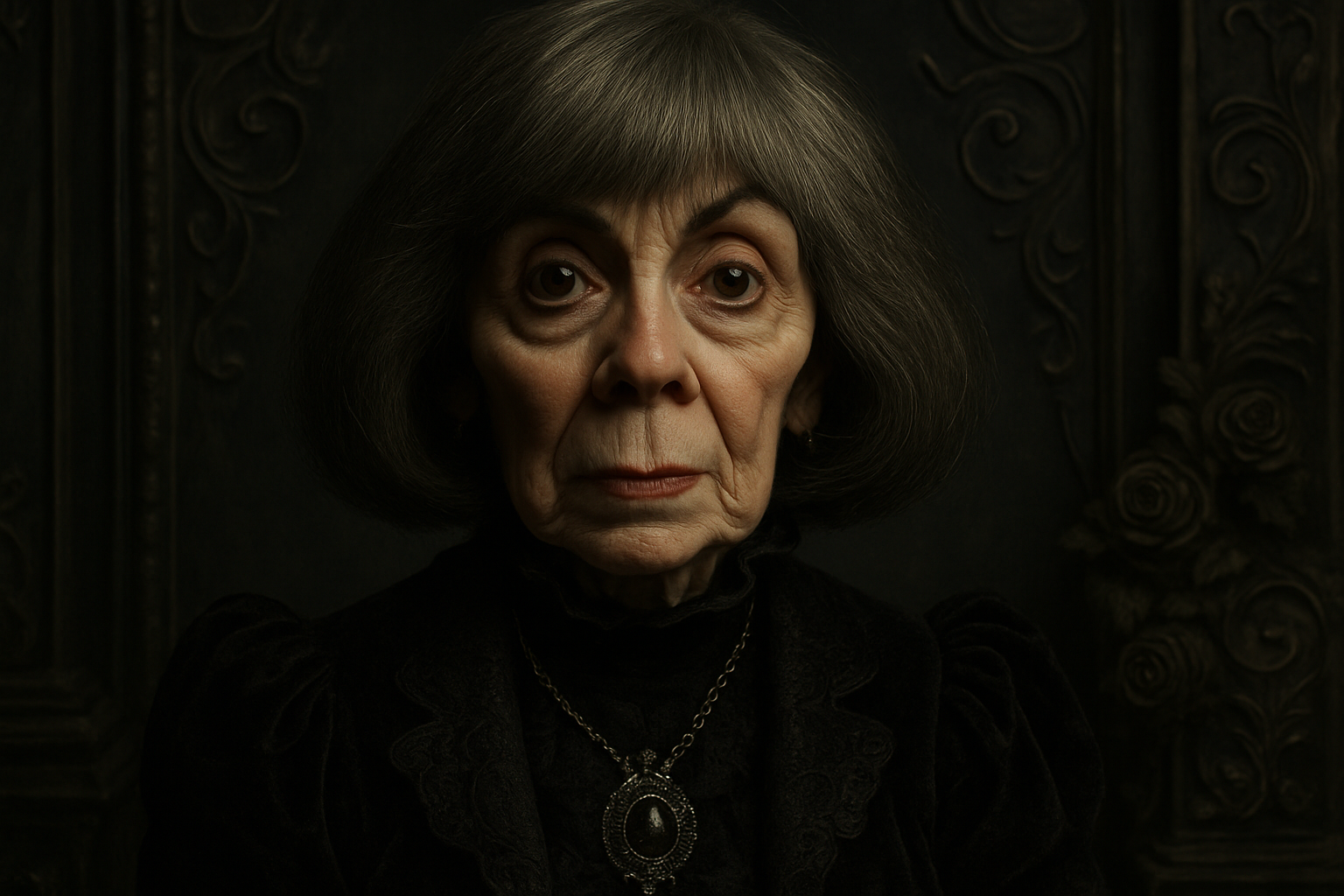
Author Anne Rice, whose Vampire Chronicles became a foundational text for the Goth subculture and revitalized the gothic novel.
Anne Rice’s The Vampire Chronicles, beginning with Interview with the Vampire in 1976, was a watershed moment. Arriving just as the Goth scene was beginning to form, her work transformed the vampire from a monstrous predator into a tormented, philosophical, and sensually androgynous anti-hero. Her vampires, struggling with alienation, loneliness, and the weight of immortality, became direct role models for a generation of Goths who saw their own feelings reflected in these beautiful, damned creatures.
The Beautiful Decay of Southern Gothic Fiction
Another distinctly American genre, southern gothic fiction, provided a powerful new aesthetic for the subculture. Pioneered by authors like William Faulkner and Flannery O'Connor, this genre explores themes of social and physical decay, a fixation on the grotesque, deeply flawed characters, and a haunted past that refuses to die. The decaying plantation homes of the American South became a powerful new symbol, echoing the crumbling castles of the original gothic novel.
This "aesthetic of beautiful decay" serves as a unifying principle that connects Walpole's ruins, Poe's moral entropy, and the Victorian cult of mourning with a modern American sensibility. It helps explain the visual style of the subculture and the influence of southern gothic fiction on Goth-adjacent musicians like the swampy psychobilly of The Cramps and the dark, narrative-driven work of Nick Cave.
The Legacy Lives On: Poppy Z. Brite and Contemporary Goth
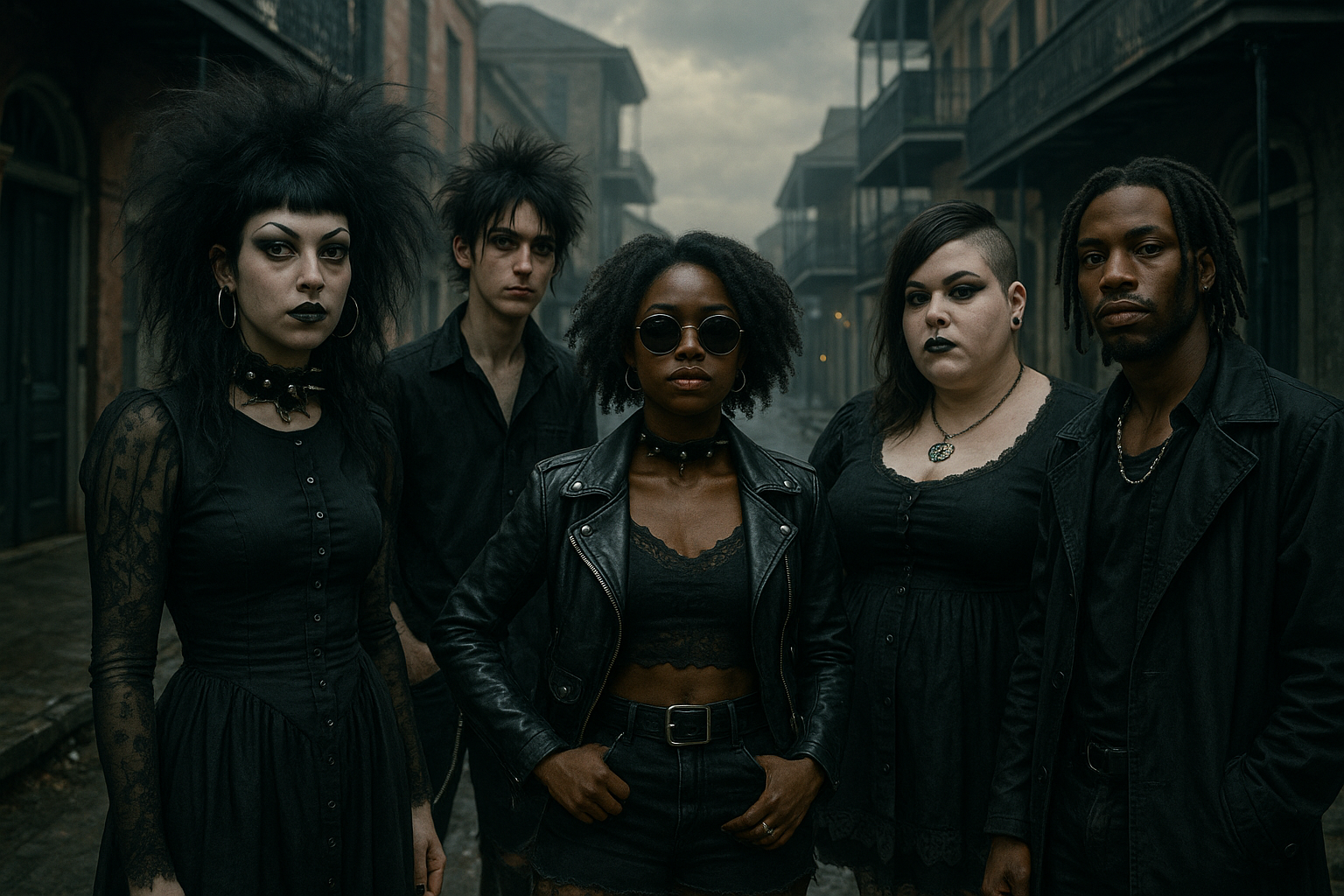
The legacy of gothic fiction continues today in a diverse, global subculture that reinterprets its timeless themes of alienation, beauty, and darkness.
The relationship between Goth culture and literature came full circle in the 1990s with authors who were not just influencing the scene, but writing from deep within it.
Queering the Gothic: A Subculture Sees Itself
Poppy Z. Brite’s novel Lost Souls (1992) is a landmark text written from and for the Goth subculture. Set in a world of Goth clubs, bands, and fans, the novel embraced the scene's highly performative approach to identity. Brite's work explored themes of queerness, androgyny, and the body in a way that resonated profoundly with an audience that had long celebrated fluid and non-conformist expressions of gender and sexuality. Brite's fiction represents a moment where the subculture, born from literature, became the direct subject of a new wave of gothic fiction, ensuring the genre's continued evolution and relevance.
Conclusion
The line from the first gothic novel to the modern Goth club is direct and unbroken. It is a lineage woven from shared themes of romantic melancholy, psychological depth, a fascination with the macabre, and a celebration of the beautifully strange. The crumbling castles, tormented anti-heroes, and supernatural horrors of the 18th and 19th centuries were not just left on the page; they were resurrected in the echoing guitars, poetic lyrics, and defiant aesthetics of a subculture that found its truth in their shadows. Ultimately, gothic fiction is not merely an influence on Goth culture—it is its soul, its language, and its intellectual bedrock.
The literary tradition of the Gothic is vast and deep. What are your favorite works of gothic fiction, and how do you see their influence in the culture today? Share your thoughts in the comments below.

